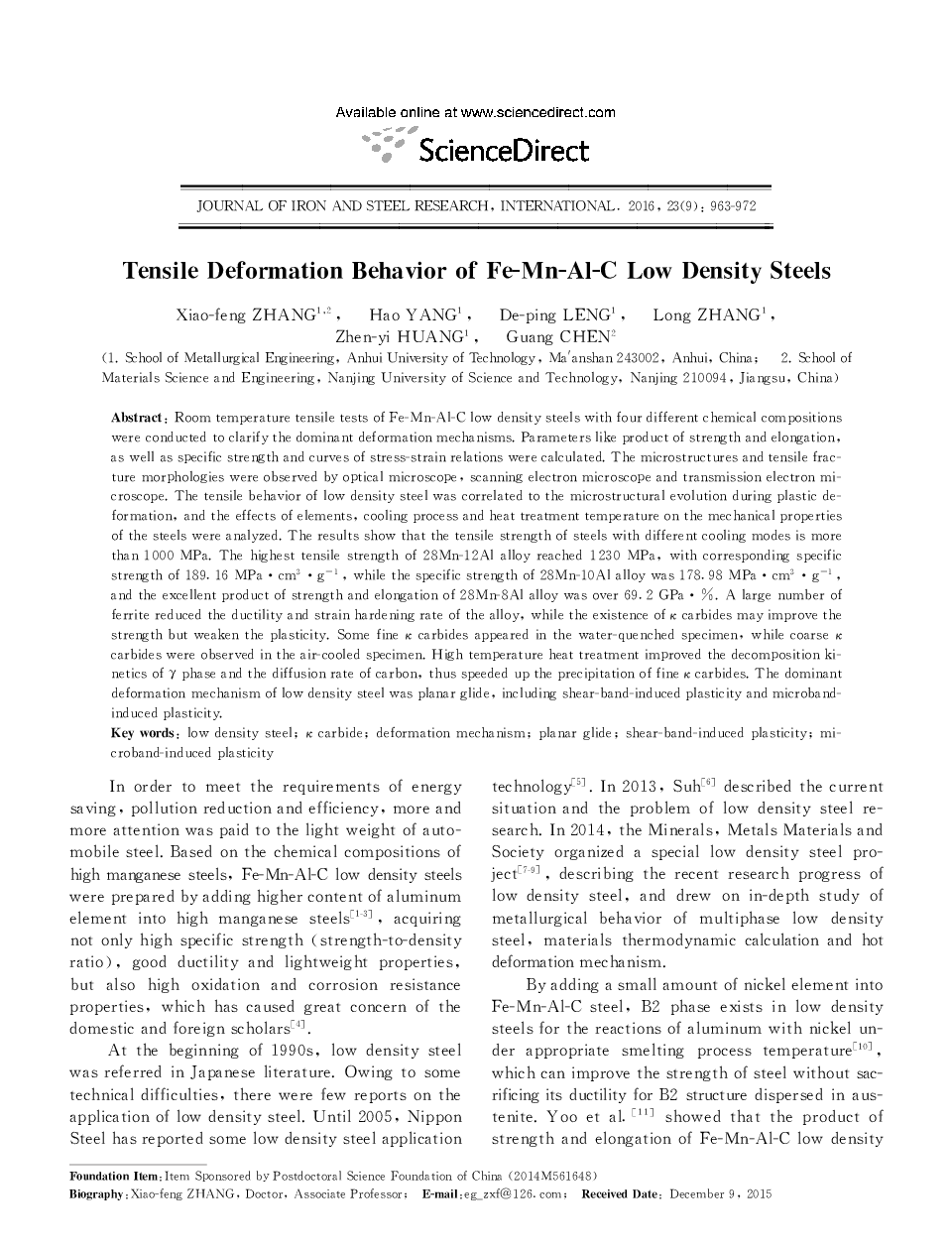| Article ID | Journal | Published Year | Pages | File Type |
|---|---|---|---|---|
| 8004533 | Journal of Iron and Steel Research, International | 2016 | 10 Pages |
Abstract
Room temperature tensile tests of Fe-Mn-Al-C low density steels with four different chemical compositions were conducted to clarify the dominant deformation mechanisms. Parameters like product of strength and elongation, as well as specific strength and curves of stress-strain relations were calculated. The microstructures and tensile fracture morphologies were observed by optical microscope, scanning electron microscope and transmission electron microscope. The tensile behavior of low density steel was correlated to the microstructural evolution during plastic deformation, and the effects of elements, cooling process and heat treatment temperature on the mechanical properties of the steels were analyzed. The results show that the tensile strength of steels with different cooling modes is more than 1000 MPa. The highest tensile strength of 28Mn-12Al alloy reached 1230 MPa, with corresponding specific strength of 189. 16 MPa
- cm3,
- gâ1, while the specific strength of 28Mn-10Al alloy was 178. 98 MPa
- cm3,
- gâ1, and the excellent product of strength and elongation of 28Mn-8Al alloy was over 69. 2 GPa
- %. A large number of ferrite reduced the ductility and strain hardening rate of the alloy, while the existence of κ carbides may improve the strength but weaken the plasticity. Some fine κ carbides appeared in the water-quenched specimen, while coarse κ carbides were observed in the air-cooled specimen. High temperature heat treatment improved the decomposition kinetics of γ phase and the diffusion rate of carbon, thus speeded up the precipitation of fine κ carbides. The dominant deformation mechanism of low density steel was planar glide, including shear-band-induced plasticity and microband-induced plasticity.
- cm3,
- gâ1, while the specific strength of 28Mn-10Al alloy was 178. 98 MPa
- cm3,
- gâ1, and the excellent product of strength and elongation of 28Mn-8Al alloy was over 69. 2 GPa
- %. A large number of ferrite reduced the ductility and strain hardening rate of the alloy, while the existence of κ carbides may improve the strength but weaken the plasticity. Some fine κ carbides appeared in the water-quenched specimen, while coarse κ carbides were observed in the air-cooled specimen. High temperature heat treatment improved the decomposition kinetics of γ phase and the diffusion rate of carbon, thus speeded up the precipitation of fine κ carbides. The dominant deformation mechanism of low density steel was planar glide, including shear-band-induced plasticity and microband-induced plasticity.
Related Topics
Physical Sciences and Engineering
Materials Science
Metals and Alloys
Authors
Xiao-feng ZHANG, Hao YANG, De-Ping LENG, Long ZHANG, Zhen-yi HUANG, Guang CHEN,
